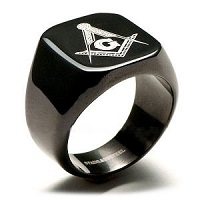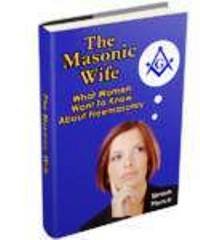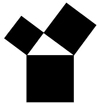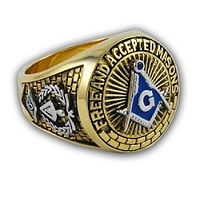Freemason Symbols
Freemason Symbols Represent the Heart of Freemasonry
Freemason Symbols And Their Masonic Symbolism
Ark of the Covenant
Master Mason Apron,...of Unspotted White Lambskin
Rough and Perfect Ashlar
Masonic Altar
Masonic Blazing Star
Cable Tow
Masonic Wages,...Corn, Wine and Oil
47th Problem of Euclid
Masonic Lamb
Letter G
Masonic Eye
Masonic Gavel
Mosaic Pavement
Masonic Sheaf of Corn
Square and Compasses
Masonic Shoe
Trestleboard
Freemason symbols provide a visual means of attaining the beginnings of Masonic Education.
These Masonic images are used to teach morals and lessons...much as we use "visuals", like PowerPoint for presentations and YouTube for short video tutorials or an i-Pad to read a book.
Each of these import meaning to an embodiment of picture images and data within a specific school of thought.
The statement "A picture is worth a thousand words." as the best way to learn, is just as true, today, as it was 5,000 years ago.
Masonic Lodge Symbols Education
Freemason Symbols
Masonic symbology has come down to us from the cuneiform scripts of the ancient Sumerians, circa 3000 B.C.. as well as the ancient Mesopotamians and Persians. Cuneiform writing was a series of pictographs (symbols) which were drawn on clay tablets with a blunt reed (or stylus).
Masonic scholars, today, question the origin of the Point within the Circle, whose parallel upright lines on both sides of the circle, closely resemble an Egyptian hieroglyphic (circa 1570–1342 B.C.).
Is it one of the first Freemason symbols?
It is not known; however this information creates questions in scholarly circles.
Did Freemasonry begin long before King Solomon's temple was built (circa 953 B.C.)?
Did it begin with the operative stone mason guilds during the Middle Ages? (between 500 A.D. and 1500 A.D.) Did it begin in Scotland near the time of Robert the Bruce (1274 - 1329)?
These questions are a subject of much debate within the fraternity. Thousands of research man-hours have been spent attempting to answer these questions, mostly to little avail.
Very little information has surfaced from the books and hand-written manuscripts that survived these eras in history.
Even Freemason symbols are subject to somewhat different interpretations across the many Masonic jurisdictions in the world.
Understanding Freemasonry Begins With
Learning Its
Symbols

Learning the Meanings of Freemason Symbols:
Masonic symbology was used in past centuries, not due as much to Masonic secrecy,
(as many people believe), but due to the fact that most of the world's population
was illiterate.
During the Dark Ages, the Middle Ages, and through subsequent centuries, most of the population, being working people, were illiterate or had only a rudimentary (basic) ability to sign their names, make their "mark" to signify their acceptance, or read simple words.
During the Middle Ages, many Lords (wealthy landowners) could read (and some could not), but the Serfs (working class people), almost as a whole, had never been taught to read.
During the Dark Ages and extending throughout the Middle Ages, there was a loss of classical learning due to the many wars, bloodshed and unrest in which most of the old hand-printed scrolls, papyrus paper, books and records were burned by the opposing forces...much like King Solomon's temple was dismantled and carried off, never to return.
Illiteracy did not make these Masons stupid or lesser operative Masons in the craft. They were simply working people, taking care of their families, who, by necessity, had to begin working at a very early age...usually from dawn until dusk, 6 days a week and did not have the time nor the teachers to avail themselves of the ability to learn to read or of any higher education.
Making Your Mark: Some of you can, even now, remember people in your past (or present) who were illiterate and signed their name (made their mark) with an "X".
Schools were for the wealthy.
Thus, operative Freemason symbols were taught to these stone masons (workers in stone) as a part of their obligation for the betterment of their craft.
Actual (operative) stone masons made their "mark" by inscribing their work with their symbol (or logo), just as artists and other craftsmen have "signed" their work throughout the centuries. This "mark" symbolizes the uniqueness of the piece as well as the intent of the Master craftsman that each person who views it, be aware of its unique and personal craftsmanship.
Today, there are mass-printed books, everywhere, and a wealth of information on the internet about Freemasonry. But, this has not always been the case. In the operative stonemason days, only the very few people who could read, owned books.
Books were created by scribes who painstakingly copied down the the verbal
words they heard or copied, (letter by letter) the words from other hand-printed
scrolls, which later became hand-bound books. Due to the immense amount of
time it took to create such a book, they were very rare and very expensive.

...Hence, due to the lack of books, much knowledge was passed down via the use of symbols and by word of mouth...a "monitorial" inculcation (mouth-to-ear-teaching).
Printing presses were actually invented by the Chinese circa 593 A.D. wherein each page's text was hand-carved onto a wooden block, dipped into ink and then applied to cloth, and later, when paper became more readily available and less expensive, the ink-dipped blocks were applied to the paper, from which books could be bound.
In Germany, Johannes Gutenberg invented the use of movable type on his printing press (circa 1440 A.D.) ...568 years ago, which made the creation of books much faster and much less expensive, and therefore, more easily acquired by the common man.
Hand-Written Book Inscription: Many of the aforementioned scribes only heard the spoken words (without the advantage of being able to copy any written text) and, therefore, spelled the words as best they knew how.
This fact accounts for the numerous different spellings of so many names and words in the Old Charges (Old Manuscripts) (1390 - 1714). Some of the Old Charges and old Masonic constitutions are on hand-written scrolls.
This also accounts for some of the many translation differences in the Holy Books of the major religions of the world which Freemasonry embraces...(the Bible, the Torah, the Veda, the Koran, etc.) down through history.
Masonic Scholars Study Freemason Symbols: True Masonic scholars have devoted a portion of their time to the study of the meanings of Freemason symbols.
Consequently, they have a strong foundation of knowledge which the non-scholar lacks. (The word "scholar" in this instance refers to a person who studies...and not a person who has a genius-level I.Q. mind, which others were not blessed with.)
Your Symbolic Foundation Beneath Your Middle Chamber: The perfect ashlars (stones) which made up the foundation of King Solomon's Temple were gargantuan (huge) in size, ..some as large as 41 feet x 11.5 feet,... because in his wisdom; King Solomon understood the need to build a solid foundation for his temple...just as each of us must do.
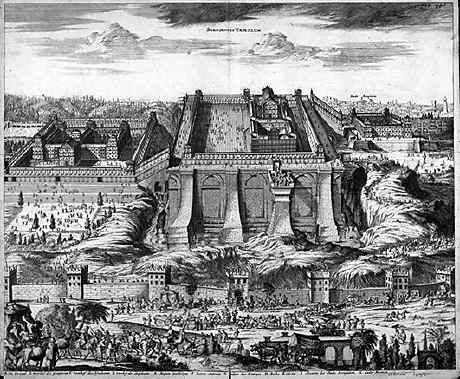
: So, ...now that nearly everyone has been taught to read ...and with millions of books now available, as well as nearly 6,000,000 pages about Freemasonry on the internet and over 400 books about Freemason symbols and Masonic symbolism available on Amazon.com, why is this depth of knowledge not found in most Freemasons, today?
A: While there are lots of books and information available; unfortunately, a clear, concise, step-by-step Masonic education is nearly impossible to find.
The foundation of Freemason
ritual is built on Freemason symbols and biblical (Holy Book) references.
Therefore, it is impossible to fully understand Masonic ritual without understanding its underlying foundation...that of the biblical meanings within ritual and the rich history of these Freemason symbols ...these Masonic symbols, which we have inherited.
Lodge education officers valiantly attempt to impart pieces of Masonic knowledge; ...however the only true path to Masonic education is when you begin to link and understand the meaning of the words in the ritual to their biblical meaning coupled with the Freemasonry symbols which underlie it.
Memorizing the words is not enough. True light is achieved through study and understanding of that which you seek.
Only then can you "feel" the biblical power of our Creator's words within
Freemasonry's tenets because this is where the rubber-meets-the-road.
Ritual, alone will not fulfill your quest. 50 years of perfect lodge attendance cannot create true "light".
Degrees: Without a true understanding of the ancient and biblical tenets, Freemason symbols, Masonic history and why we circumambulate (the act of moving around a sacred object) in our ancestor's footsteps around an altar glorified to our Creator;...the titles and degrees upon which we have been bestowed may possibly only be words which attempt to attach a scholarly credibility and experience to a man which he may not, in fact, yet possess.
Education, study and the resulting knowledge which comes from this learning process is the only method which leads to a "graduate", once having received his "Master's" degree, actually knowing what he studied, what he learned and why it is important in his life.
"As Hiram prayed daily for guidance from his God before drawing the designs that would set the craftsmen to work, so must we."
 Ancient of Days
Ancient of Days by William Blake, 1794
"...Each Master Mason becomes his own architect.
Each supervises the building of that "temple not made by hands."
Each builds into his structure
beauty, harmony and knowledge to the extent he is willing to work."...
The Craft and Its Symbols, p. 84, 1974, Allen E. Roberts, MaCoy Publishing and Masonic Supply Co.
Freemason Symbols
Looking back through history, we find that Masonic symbols have been drawn on tracing boards, scratched into the dirt with a stick during the days when lodges met on high hills and low vales in the outdoors, chiseled into stones, not only from stonemason artisans of the past making their Master's Mark, (their attestation of their work as a job well done) but also proudly inscribed into our more modern-day building cornerstones.
Masonic Temple
We see Masonic symbols in each Masonic temple around the world. Masonic light abounds...and Masonic charity is well known.
Masonic Jewelry
Freemason symbols are most often noticed in Masonic jewellery such as Masonic rings, Masonic lapel pins and Masonic cufflinks. Members with other Masonic degrees, such as Knights Templar, wear Masonic jewelry displaying symbols of the Knights Templar sword, cross and other ancient symbols of the fraternity.
Masonic Art
Masonic art is full of Freemason symbols...whether it be a Masonic painting or on each and every one of the Masonic aprons across the world.
Like Freemasons, themselves, each unique Masonic apron is a testament to its owner's belief in a life well lived in brotherhood with other like-minded men.
Masonic Clip Art
Is Masonic artwork using Freemason symbols a thing of the past? No. Today, we have Masonic clip art. There is a lot of free Masonic clipart on the web. Some high resolution Masonic clipart is also available. Most is copyright free, for non-commercial use, but always check with the website's policies before using it.
Masonic Regalia
Digital Masonic clipart is also used to embroider symbols onto Masonic regalia such as the Masonic altar cloth used in the lodge, Masonic officer aprons, Masonic funeral aprons and Masonic flags.
Digitized routers are used to carve Freemason symbols into wooden Masonic regalia items such as the square and compasses symbol into the Masonic gavels and the Wardens Columns used in the lodge.
Freemason Symbols In The 21st Century
Much like the moveable-type printing presses replaced the scribes of yore, technological advances have also brought Freemasonry into the 21st century.
If you could go back in time and tell one of the scribes who hand wrote one of these entire Masonic constitutions encompassed in the Old Charges (circa 1400 A.D.) (without a single error or erasure) about a "magic box" called a computer, with a screen and a bunch of buttons on the table wherein if he pushed a few of these buttons, another "magic box" would print hundreds of pages in an hour; how could he possibly fathom such a preposterous idea?
It would be only logical for him to conclude, using only his current knowledge at the time, that witchcraft would have to be involved, or magic of some kind to be able to print pages from a "magic box", that we now know as a printer.
Sadder still, he couldn't even "Google" it to be able to find one! ...And, even if he had a computer, we'd have to explain to him how electricity works and how to download programs, drivers and apps and, oh yes, teach him how to type.
We are a very fortunate generation that such a wealth of knowledge is now at our fingertips.
Deciphering The Cryptograms of Masonic Symbology
A Masonic scholar is simply one who reads for greater understanding in his "quest for more light".
He learns the meanings of each cryptogram (a figure or representation having
a secret or mysterious meaning), so that he may build on it to understand
the whole.
(For instance, one of the foundational symbols within Freemasonry is about learning the significance of creating a right triangle.)
The Masonic symbol denoting the Pythagoran Theory looks like 3 black boxes...until you learn to see past the boxes, and center on its truth.
Think back a moment to your childhood...before you could read. You were riding along with your parents in the car and saw a big red, octagonal sign with black letters on it which was stuck on a post in the ground.
Until you were taught that a stop sign meant that you must (by law), stop the car, it is simply an imposing big red sign by the side of the road...and thus an enigma (a mystery) to you as to its meaning.
Later, after you learned to read, you learned other road signs. You learned the meanings of "Merge", "On Ramp", "MPH", etc.
Therefore, if you can read, (and apply yourself) you, too, can become a Masonic scholar...but more important than becoming a scholar, is feeling the purity of Freemasonry's (and our Creator's) goals for each of us.
The real goal of understanding, ...the Masonic "light" which each of us seeks, is not how many books you've read, but whether you "get" their message in your heart.
So, as you can see, the history of Freemasonry is best represented by its Freemason symbols, which have come down to us through the ages.
The Freemason symbols that you see on this page, ..from which our ancient brethren were taught, ... are the same Masonic symbols and meanings that have come down through the centuries...and the very same ones that you, too, will study in your quest for more light.
So Mote It Be!
Simon
Simon Sez Masonic Education
Bestseller Masonic Rings Under $ 50.
at MasonZone.comRelated Pages:
Freemasons,...an overview of questions about Freemasonry
Lodge Officer Duties and Their Symbolic Jewels of Office
Like It?
If you would like to share this Masonic education with your friends, it's easy to do.
Just click on the social media icons, below, to 'Like It' on FaceBook, or 'Tweet' it on Twitter.
5 Fast Methods To Find the Information You Want to Learn About
- Search Box - Use the Search Box at the top of your page.
- Site Map - Use my Site Map page to find the topics you are most interested in.
- Carousel - Use the carousel of pages at the top of your screen.
- Menu Icon - On MOBILE, click the MENU button at the top of each page.
- Masonic Books - Browse through a selection of Masonic books.
